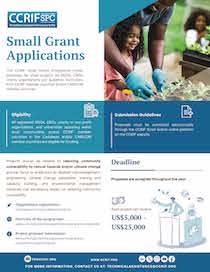A magnitude 6.2 earthquake occurred at 14:50:51 (UTC) on 21 March 2025, located at 121.4 km (75.5 mi) NNW of Burica, Chiriquí Province, Panama; 147.9 km (91.9 mi) N of Pedregal, Chiriquí Province, Panama and 146.1 km (90.8 mi) NNW of Puerto Arguelles, Chiriquí Province, Panama. Final estimates from the United States Geological Survey (USGS) located the epicentre of the event at 7.049°N, 82.397°W, and at a depth of 10 km (6.21 mi).
A magnitude 6.2 earthquake occurred at 14:50:51 (UTC) on 21 March 2025, located at 123.9 km (77 mi) NNW of Burica, Chiriquí Province, Panama; 149.4 km (92.8 mi) N of Pedregal, Chiriquí Province, Panama and 148.4 km (92.2 mi) NNW of Puerto Arguelles, Chiriquí Province, Panama. Initial estimates from the United States Geological Survey (USGS) located the epicentre of the event at 7.036°N, 82.372°W, and at a depth of 10 km (6.21 mi).
A magnitude 7.6 earthquake occurred at 23:23:14 (UTC) on 8 February 2025, located at 210.1 km (130.6 mi) NNE of George Town, Cayman Islands; 216.3 km (134.4 mi) NE of Bodden Town, Cayman Islands and 218.1 km (135.5 mi) NNE of West Bay, Cayman Islands. Initial estimates from the United States Geological Survey (USGS) located the epicentre of the event at 17.702°N, 82.456°W, and at a depth of 10.0 km (6.21 mi).
A magnitude 5.6 earthquake occurred at 03:50:29 (UTC) on 9 December 2024, located at 54.45 km (33.83 mi) SE of Cosiguina, Nicaragua; 9.8 km (6.1 mi) N of Conchagua, La Unión, El Salvador and 13.4 km (8.3 mi) NNE of La Unión, La Unión, El Salvador. Final estimates from the United States Geological Survey (USGS) located the epicentre of the event at 13.221°N, 87.875°W, and at a depth of 15.4 km (9.57 mi).
A magnitude 5.6 earthquake occurred at 03:50:29 (UTC) on 9 December 2024, located at 54.45 km (33.83 mi) SE of Cosiguina, Nicaragua; 9.8 km (6.1 mi) N of Conchagua, La Unión, El Salvador and 13.4 km (8.3 mi) NNE of La Unión, La Unión, El Salvador. Initial estimates from the United States Geological Survey (USGS) located the epicentre of the event at 13.221°N, 87.875°W, and at a depth of 15.4 km (9.57 mi).
This event briefing describes the impact of rainfall on Honduras, which was associated with a Covered Area Rainfall Event (CARE) starting on 14 November 2024 and ending on 19 November 2024. The Rainfall Index Loss (RIL) for the Covered Area Rainfall Event was above the attachment point of Honduras’ Excess Rainfall (XSR) policy, therefore a payout of US$4,665,090.47 was made to the Government of Honduras.
Although the wind speed was above 39 mph in Belize, the final runs of the CCRIF tropical cyclone loss model for wind and storm surge have produced zero government losses for this country. For this reason, Tropical Cyclone Sara is considered a reportable event event1 for Belize.
This event briefing describes the impact of rainfall on Belize, which was associated with a Covered Area Rainfall Event (CARE) starting on 16 November 2024 and ending on 18 November 2024. The Rainfall Index Loss (RIL) for the Covered Area Rainfall Event was below the attachment point of Belize’s Excess Rainfall policy, therefore no payout is due to the Government of Belize on its Excess Rainfall policy.
This event briefing describes the impact of rainfall on Guatemala, which was associated with a Covered Area Rainfall Event (CARE) starting on 17 November and ending on 18 November 2024. The Rainfall Index Loss (RIL) for the Covered Area Rainfall Event was below the attachment point of Guatemala’s Excess Rainfall policy, and therefore no payout is due to the Government of Guatemala.
This event briefing describes the impact of rainfall on Panama, which was associated with a Covered Area Rainfall Event (CARE) starting on 12 November 2024 and ending on 18 November 2024. The Rainfall Index Loss (RIL) for the Covered Area Rainfall Event was below the attachment point of Panama’s Excess Rainfall policy and the Panama-FAP Excess Rainfall policy, and therefore no payouts are due to the Government.





